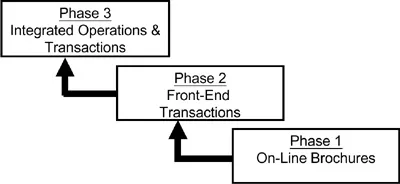
Summary: Net Profit
Review and Analysis of Cohan's Book
BusinessNews Publishing
- English
- ePUB (adapté aux mobiles)
- Disponible sur iOS et Android
Summary: Net Profit
Review and Analysis of Cohan's Book
BusinessNews Publishing
À propos de ce livre
The must-read summary of Peter S. Cohan's book: `Net Profit: How to Invest and Compete in the Real World of Internet Business`.
This complete summary of the ideas from Peter S. Cohan's book `Net Profit` shows how thousands of businesses are in the process of migrating to the Internet because the entry barriers are so low at the present time. The leading Web players, however, are those companies that have shaped their business strategy so as to gain control of the choke points and economic levers within their respective industries. In his book, the author explains the strategies that all companies should follow if they wish to become valuable internet companies of the future and why you need to implement them now before everyone else.
Added-value of this summary:
• Save time
• Understand key concepts
• Expand your knowledge
To learn more, read `Net Profit` and find out how to develop the best strategies that will guarantee you internet success.
Foire aux questions
Informations
Summary of Net Profit (Peter S. Cohan)
Section 1
A Framework for Assessing the Value of Internet Based Business Models
- Net Profit Evaluation -- for investors
- Net Business Phases -- for Internet business managers
- Net Application Phases -- for non-Internet managers
- Evaluating Internet investment opportunities.
- Analyzing Internet business strategies.
- Deciding how to use the Web to improve businesses.
1. Net Profit Evaluator
- Has economic leverage -- that is, sells a product that is important to its customers and is in such short supply the company can charge a high price for it.
- Offers a closed-loop solution -- that is, a total solution that generates economic value for customers.
- Has a management team that can adapt well to the rapid changes that are occurring.
2. Net Business Phases

- Lossware -- companies that lose money because of low entry barriers, low or no switching costs for customers and loads of competition. Lossware companies spend the bulk of their revenues on marketing.
- Brandware -- companies that have established a brand name consumers become familiar with -- which saves customers the trouble of comparing offerings from numerous vendors. Brandware companies still spend quite a lot on marketing in the expectation of surviving industry consolidations.
- Powerware -- companies that have a product which is in short supply (because competitors have been squeezed out) and which has high switching costs. Powerware companies generate consistently high returns.
3. Net Application Phases

- Phase 1 -- Online Brochures These companies put product literature, annual reports and other information on their Web site.
- Phase 2 -- Front-End Transactions These companies use their Web site to gather order forms for their products. The orders are then handled by the company’s normal order fulfillment process.
- Phase 3 -- Integrated Operations & Transactions These companies use the Internet to exchange information with customers, to link with the internal operations of the company and in some cases to deliver products and services.